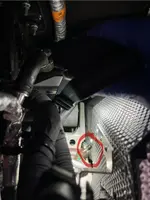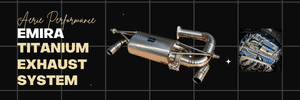I’ve been trying to find info on bleeding the clutch slave cylinder (since I was going to bleed my brakes) and the only information I could find was about accessing the bleed valve from below the car. This requires doing it “blind” or by feel since you cannot see the bleed valve directly from below the car.
Turns out you can easily see and reach it from above. I climbed into my trunk (fair warning, In only 140lbs) and leaned across the engine bay. Photos attached show the bleed valve circled in red. Additional photos included just to orient you to its location (in front of and on the left side of the engine).
Pro tip, get some smaller gauge tubing to attach to it before you bleed it. I used the tubing from my normal brake caliper bleeder bottle and it was large enough that it did not stay firmly attached to the nipple (and I spent a good bit of time cleaning up brake fluid that dripped down the side of my engine).
Not sure if others had trouble opening the bleed valves on their brake calipers, but mine were torqued down crazy tight (I ended up loosening them with a 11 mm socket first before attaching my bleed tubing/bottle). Also, I have two different sets of flare wrenches and on both, the thickness of the heads made getting them onto the bleed valves difficult. I had to put them on the nipple, loosen 1/16th of a turn, flip the flare wrench over, loosen it another 1/16th of a turn, flip it over, etc.
If anyone knows of better flare wrenches for AP calipers, I’m all ears


Turns out you can easily see and reach it from above. I climbed into my trunk (fair warning, In only 140lbs) and leaned across the engine bay. Photos attached show the bleed valve circled in red. Additional photos included just to orient you to its location (in front of and on the left side of the engine).
Pro tip, get some smaller gauge tubing to attach to it before you bleed it. I used the tubing from my normal brake caliper bleeder bottle and it was large enough that it did not stay firmly attached to the nipple (and I spent a good bit of time cleaning up brake fluid that dripped down the side of my engine).
Not sure if others had trouble opening the bleed valves on their brake calipers, but mine were torqued down crazy tight (I ended up loosening them with a 11 mm socket first before attaching my bleed tubing/bottle). Also, I have two different sets of flare wrenches and on both, the thickness of the heads made getting them onto the bleed valves difficult. I had to put them on the nipple, loosen 1/16th of a turn, flip the flare wrench over, loosen it another 1/16th of a turn, flip it over, etc.
If anyone knows of better flare wrenches for AP calipers, I’m all ears








